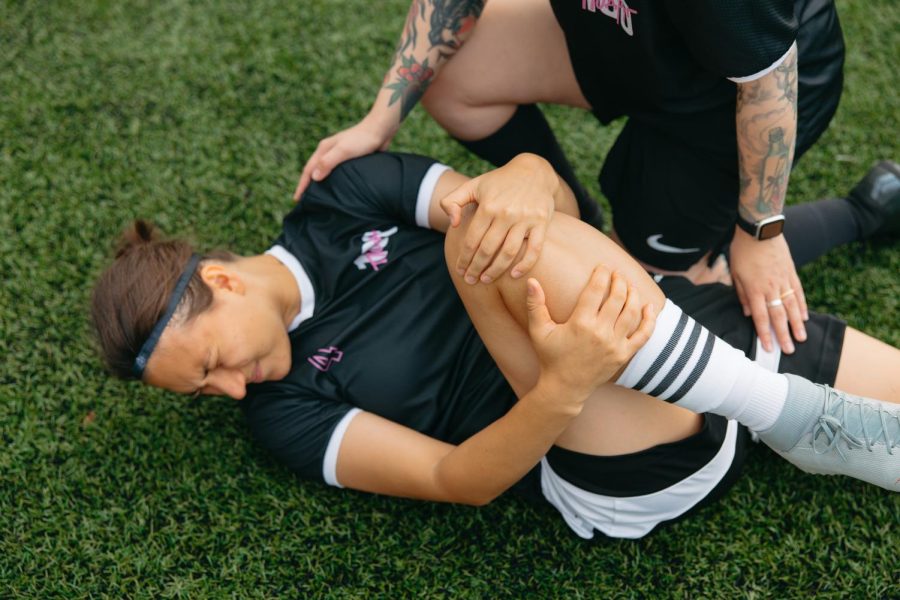How to prevent sports injuries
Facing being injured can be hard on an athlete, so what can you do to try to prevent it from even going that far?
March 9, 2022
Most people know that exercise is good for your mind, body, and overall health. What most people know but do not do correctly is protect themselves from injury. Athletes know that it is often hard to admit when they are injured. You do not want to lose your spot that you have created for yourself or to offset your training plan. So here is a simple list of things you can do to prevent injuries from happening in the first place.
Create a proper training plan:
Training effectively and efficiently will lower your risk of being injured. This includes not working the same muscles every day and rotating between workouts. This can be doing cardio one day, strength training the next, and then yoga/flexibility training another day.
Learning correct techniques for your sport:
Some athletes tend to injure themselves by not even doing the activity correctly. This can be portrayed mostly in the form of some activities (lifting, rowing, etc…). So, make sure you talk to a coach/professional about your pains or concerns so you can correct it before you further injure yourself.
Wear the correct gear:
Wearing the correct gear for your sport is especially important. For some it may be mouthguards, shin guards, spine protectors, goggles, tape, shoes, etc… It does not matter what gear you wear if it is advised, being used correctly, and excellent quality. Gear is not something you go for the cheap side of. Most of the time, you will get longer, and more effective use of gear when it is excellent quality, which most of the time is more expensive.
Have a proper warm up and cooldown:
Having a good warmup and cooldown regimen is something most people think is self-explanatory, but they do not do it. A warm-up should consist of something easy but still gets your heart rate up. This could be sprints, a run, dynamics, or core work. This will help your body start preparing for the main part of your physical activity.
Your cooldown should be roughly twice as long as your warmup. The cooldown should be slow and calming and could be yoga or stretching. This will help slow your heart rate and keep you and your body calm after an intense workout.
Stretching:
Stretching can help lower the risk of injury by increasing your muscle’s ability to stretch and contract. There are a lot of helpful stretching videos online, such as these from Harvard Health. The important thing about stretching is that it should not hurt. It should just feel like a tight pull.
Hydration:
Dehydration can cause athletic activities to feel much harder and can even cause muscle tightness. This could further lead to injury. Hydration can help increase your endurance and capabilities by increasing your electrolytes, and it can also improve your concentration, so fill your water bottle and keep up with it.
Rest:
Resting is important to body recovery. This can help your body prepare for extended exercise, and help you prepare mentally for the next activity. There are several types of rest, such as taking a nap or taking a day off. These are both incredibly helpful to the body’s long-term performance.
Knowing your body:
Most of all, knowing your own body is necessary when you are an athlete, especially an athlete that has sustained injuries in the past. If you know how your body works, this means what you need to eat, drink, what exercise benefits you, and what injuries you are prone to. You are less likely to be injured and you will be more successful. This also includes knowing when you are hurt, and not being afraid to talk about it. The longer you wait the longer it takes to recover. Just by learning how to take care of your body, and consulting a coach/professional, you downgrade your chance of getting an injury tremendously.











